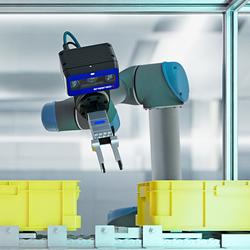Georgia Tech's research magazine and website get updated and redesigned
The magazine has undergone a major content update and redesign
ATLANTA, Nov. 19, 2014 -- For three decades, the Georgia Institute of Technology's Research Horizons magazine has showcased the Institute's groundbreaking research.
Now, the magazine has undergone a major content update and redesign that coincides with the launch of three additional research communications tools — all aimed at presenting Tech's findings in more contemporary, compelling, and engaging way.
In the magazine itself, which started as a four-page, black and white publication, readers will see greater emphasis on visuals, including larger photographs, more illustrations and accompanying graphics. They also will see shorter, more compact stories, and punchier headlines.
The publication's new look is part of a broader strategic research marketing plan that also includes a revamped monthly electronic newsletter and a new website (www.rh.gatech.edu) with videos, real-time updates, and shareable features. And it includes the launch of a digital e-zine, through Georgia Tech's app on the Apple storefront, for smartphones and tablets.
The four portals now give readers multiple channels to access research news at Tech.
The efforts underscore what Executive Vice President for Research Stephen E. Cross has identified as the core goals for his unit: to pursue transformative research, strengthen collaborative partnerships, and enhance the societal and economic impact of those findings.
"I see this as more than just a magazine redesign. It's a rethinking of how we talk about and how we share research that comes out of Georgia Tech," said Cross.
The changes follow several months of study, focus group research, and planning centered on what Research Horizons readers like, how to increase the publication's appeal, and how to make it more useful to subscribers, according to Kirk Englehardt, Tech's director of research communications.
Research Horizons also is focused on presenting a broader mix of stories to reflect more of the work being done across Tech's 12 core research areas, which include biosciences, electronics, energy, materials, national security, and robotics.
That reflects a strategic decision to broaden the magazine's focus to appeal to business and industry, in addition to the federal government sponsors of Tech research, the original catalysts for Research Horizon's creation in 1983.
Featured Product

3D Vision: Ensenso B now also available as a mono version!
This compact 3D camera series combines a very short working distance, a large field of view and a high depth of field - perfect for bin picking applications. With its ability to capture multiple objects over a large area, it can help robots empty containers more efficiently. Now available from IDS Imaging Development Systems. In the color version of the Ensenso B, the stereo system is equipped with two RGB image sensors. This saves additional sensors and reduces installation space and hardware costs. Now, you can also choose your model to be equipped with two 5 MP mono sensors, achieving impressively high spatial precision. With enhanced sharpness and accuracy, you can tackle applications where absolute precision is essential. The great strength of the Ensenso B lies in the very precise detection of objects at close range. It offers a wide field of view and an impressively high depth of field. This means that the area in which an object is in focus is unusually large. At a distance of 30 centimetres between the camera and the object, the Z-accuracy is approx. 0.1 millimetres. The maximum working distance is 2 meters. This 3D camera series complies with protection class IP65/67 and is ideal for use in industrial environments.
